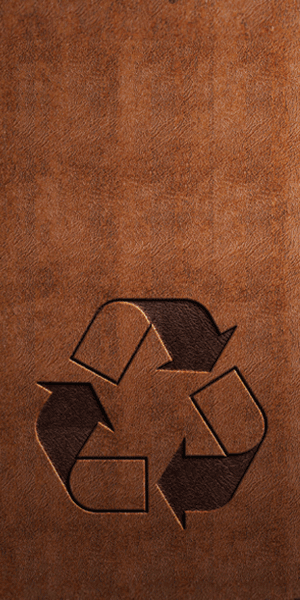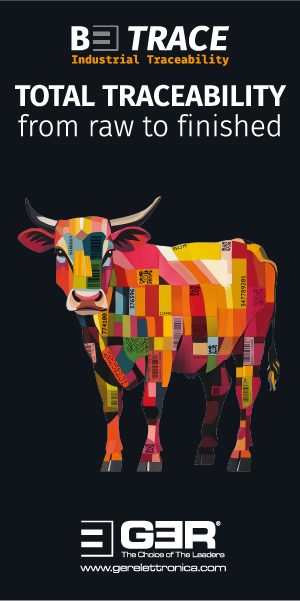A new approach to sourcing leather

Mulberry wants its customers to think of buying its bags as a way to contribute towards saving the world.
Leathergoods brand Mulberry is celebrating its fiftieth anniversary in 2021. One of a whole series of initiatives that it has launched so far to mark this special year promises to be long-lasting. Perhaps it will remain in place for the next 50 years.
It chose Earth Day at the end of the April to launch a whole new manifesto called ‘Made To Last’, saying that its aim is to be a pioneer of “a hyper-local, hyper-transparent” supply chain, through which it will establish transparency from farm to finished product.
Lowest-carbon
Part of the manifesto is the promise of a “transformative approach to leather sourcing”. To put this into practice, Mulberry says it will “work in partnership with industry-leading tanneries to develop the world’s lowest-carbon leather”, made using hides sourced from environmentally conscious farms.
Mulberry still makes more than half of its products at its own factories in Somerset in the south-west of England. It says those factories are now carbon-neutral and that everyone who works there receives a salary that complies with a fairer work campaign called Living Wage. The leathergoods brand says it wants all of its suppliers to follow this example with their own employees.
It is already working on a first range of bags born of the ‘Made To Last’ manifesto and will launch it later this year. It says this collection will reflect the future of the business, establishing a model that it will replicate with a network of trusted partners, “laying the foundations for our next 50 years”.
School shoes
Long-lasting Mulberry bags are far from new. The company knows of bags it made soon after starting up that are still in use today and it wants to make sure the bags it produces in the years to come will also have the qualities required to endure half a century of use. Sustainability manager, Rosie Wollacott, says she thinks the idea at the heart of this, that long-lasting products are good, resonates with people of all ages. This is an interesting comment at a time when the entire industry is working hard to reach and appeal to millennials and Generation Z consumers.
Ms Wollacott asks: “What was the first experience of shoes for those people? It was probably school shoes and they were probably in Clarks to buy them, not in a supermarket. And what they probably learned was that these were shoes that would last, even when they were running around the playground kicking a football. They learned that these shoes were better, worth queueing up for, worth paying more for.”
Used but useful
Mulberry has a restoration team in Somerset that repairs and reconditions around 10,000 bags per year. It has also established Mulberry Exchange to bring restored, pre-owned bags to new owners. “A humble bag can have many lives,” it says. And when its bags reach “the end of the line” and can no longer be repaired and reused, a new strand of the manifesto will come to the fore. Mulberry will still buy those bags back and what it will do with them is pass them on to one of its strategic leather manufacturing partners, Scottish Leather Group (SLG).
Used bags will go into the waste-to-energy programme that SLG runs at its tannery in Bridge of Weir and the products will, therefore, help power the production of new leather to make new bags, emphasising the circularity of leather, the leathergoods brand says. “We want to take responsibility for our whole supply chain, from farm to end of life,” says Mulberry supply chain director, Rob Billington. “And for the first time, we’re talking to abattoirs too, to engage them in the same message. It’s not good enough for us just to look after our own little bit.” He says the in-house team liked the campaign for ‘Made To Last’, but did not feel that it was saying anything revolutionary. “We didn’t think we were doing anything untoward,” Mr Billington continues, “but the reaction was brilliant, with people telling us we were pioneers. It seems that, all of a sudden, we are ahead of the pack. We don’t know all the answers, but we are committed to finding solutions because we know we are part of the problem.”
Energy drive
SLG director James Lang, the current chairman of industry body Leather UK, says he finds the ‘Made To Last’ manifesto fascinating. He would like more brands to take a leaf out of Mulberry’s book. “Leather is good,” he says. “As Mulberry has done, more companies need to say this, and have the data to back it up.” SLG’s own claim has, for some time, been that it already makes “the lowest carbon-intensity leather in the world”.
Recovering energy from its own waste materials is an important part of this. It has had an on-site thermal energy plant at its Bridge of Weir tannery since 2010, taking what was previously waste that went straight to landfill and converting it into energy for heating recycled water for use in the manufacturing process. SLG’s innovation and sustainability director, Dr Warren Bowden, was the driving force behind the waste-to-energy plant and sees the tie-up with Mulberry as a good use of the technology platform he and his colleagues have put in place at Bridge of Weir.
“The whole ‘Made To Last’ campaign is incredibly refreshing,” Dr Bowden says. “There is a need for us to be more positive, a need for us to talk up leather. Mulberry may not be the only example of a company doing that, but the idea it’s putting forward, that a bag can help save the world, is a good hook to hang the message on. It’s good to present positive examples and it’s important for us to make the case for the circular economy to become central to how the leather industry presents itself.”
Court of public opinion
Back at Mulberry, Rob Billington says the company is aware that it can and must continue to become better at what it does. “We can get better; we can be a bit radical,” he says, “but we can’t say that and then do nothing about it.” Little gets past the scrutiny of the court of public opinion these days, which is fine if you have nothing to hide. To this end, he would like to challenge the whole of the leather industry to do more on traceability; he laments the lack of a standard for this and hopes there will be one in the near future.
Such a standard would be a welcome additional tool as brands place themselves more and more in the public eye. “It’s changed,” he says. “We used to talk to the press. We used to concentrate on catwalk presentations, on making sure we had David Beckham sitting in the front row. But that’s gone; now you have to talk directly to the consumer.”
This change is affecting leather manufacturers, too, Dr Warren Bowden says. He explains: “We wouldn’t normally speak to consumers, but our customers are now presenting our story to the consumer. We have automotive customers who present our leather in their cars with a quick-response code that will take the consumer straight to our website. We have to be part of that tapestry, making it clear to consumers that leather is all about upcycling, all about low carbon.”
Mulberry Exchange brings pre-owned bags to new owners. The brand has a team of artisans in Somerset who are restoring thousands of bags each year.
Credit: Mulberry






























